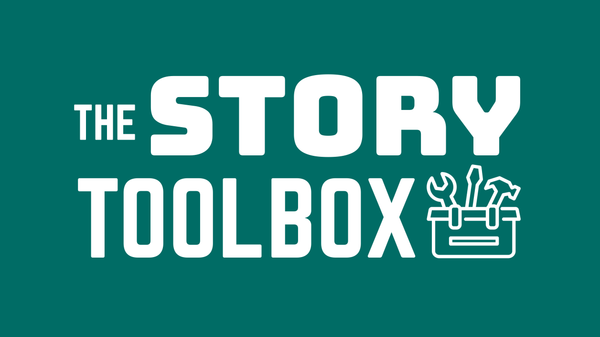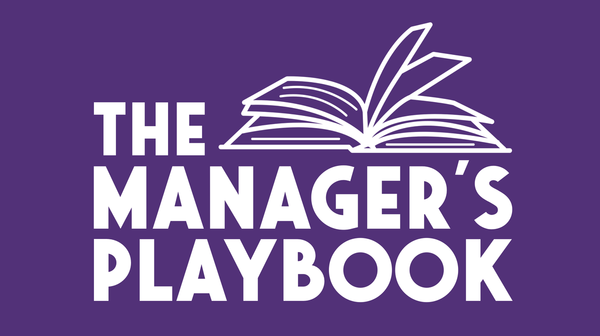The Manager's Playbook #4 - Preparing for a new direct report

Welcome to The Manager's Playbook, a recurring newsletter series on management and leadership skills.
Let’s talk about one of the first steps in the manager journey: what to do when you get a new direct report.
You’re about to start managing someone new. You’re stepping into a team that already exists. Or someone’s just moved under your umbrella. Or maybe you’re new to the company and inherited a team you didn’t hire. Either way, this is the first time you will be managing this team member.
Not someone new to the company. Not a brand-new graduate. But someone who’s been here a while. Maybe longer than you. Maybe they’ve been through multiple managers already. And now, they report to you.
This is one of those moments that matters. It’s a moment your new report is likely to remember. In The Power of Moments, Chip and Dan Heath talk about how meaningful experiences often come from moments that are deliberately shaped. Moments that create elevation, insight, pride or connection. This is one of those moments. If you treat it as something to design and not just something to get through, you have a chance to create a better beginning for both of you.
So what do you do before your first 1:1? How do you set yourself and your new report up for a smoother start?
Today's playbook will look at how to prepare for your new direct report and make sure that you're designing that transition in the best way you can.
Scenario: You've gotten a new direct report
You're preparing for your first 1:1 and realise: they don’t know you. You don’t know them. You’re supposed to support their career growth and unblock them… and you barely know what they do.
They might have baggage. Maybe things didn’t go well with their last manager. Maybe they were promised something that never happened. Maybe they’re frustrated, tired, or wary of change.
You want to help. But where do you start?
Transitions can be delicate. The team member has history, experiences, and perhaps apprehensions. Your role is to bridge the past and the future, ensuring continuity, but also starting a positive working relationship and supporting your team member. It's up to you to design that transition in the best way that you can.
Step 1: Advocate for a 1:1:1 handover meeting
If you can, ask for a three-way handover conversation: you, your new direct report, and their previous manager.
Based on Lara Hogan’s 1:1:1 format, this meeting gives you:
- A shared understanding of their history
- Helpful context on working style, goals, and recent feedback
- A chance to reassure the direct report that this is a supportive transition
Not every company does this by default, so you may need to advocate for it. If it’s not possible (say the previous manager has already left), try to schedule a call with whoever has the most historical context: maybe a skip-level manager or tech lead who’s worked closely with them.
Future posts will cover how to run the 1:1:1 itself, but for now, just focus on making it happen.
This is a small moment, but one that can shift the tone of the whole transition. It’s not just a meeting. It’s a message: you care about context, you respect what’s come before, and you’re open to learning and being curious.
Step 2: Do your homework
Before your first conversation, spend a little time getting to know their work history:
- Review past performance reviews and 360s
- Read through recent project updates, pull requests, or goals
- Look for any career development plans or feedback they’ve received
- Ask their old manager (or a peer) what they’re proud of
The goal here isn’t to form opinions. It’s to show up with context, curiosity, and care. You’re not just walking into the first 1:1 unprepared.
Step 3: Consider the context
What’s this person stepping into now?
- Are they taking on a new role or joining a different team?
- Are there changes in expectations or responsibilities?
- Do they have any relationships that might need extra attention?
These context clues can help you spot early support needs and avoid unintentional missteps. It’s also a good way to spot early opportunities: are there projects that can help them in a good way? Are there areas where they’ve already built trust?
Again, the theme here is being intentional. You’re not just reacting to what’s happening: you’re actively designing how this transition feels and being deliberate with creating that experience.
Step 4: Check your mindset
Changing managers can evoke a range of emotions: uncertainty, hope, anxiety, and even relief. As the new manager, your tone matters. Are you arriving with an air of evaluation, or with curiosity and care?
People don’t want to be interrogated. They want to be understood.
So take a moment to pause and ask yourself:
- What do you already know about this person, and what assumptions might you be making?
- Are you feeling confident, curious, nervous, or unsure? Why?
- How might they be feeling?
- What do you hope they’ll feel after your first chat?
- What would make this a successful first chapter in your working relationship?
- What kind of manager do you want to be for them?
Next to that, I like to remind myself that I'm there to listen, be curious and find out more about them. This isn’t about crafting the perfect plan. It’s about approaching the relationship with empathy, curiosity, and a clear sense of what you want your first 1:1 to look like. This first impression sets the tone. Show them you’re not just here to evaluate: you’re here to listen, learn, and support.
Step 5: Draft a quick intro
Before you meet, think about how you’ll introduce yourself. Not just your name and title, but a bit about your background and how you approach management. This gives your new direct report a sense of what to expect from you and helps them feel like they’re not walking into a mystery.
You don’t need a whole monologue. Just a few sentences about:
- What kind of work you’ve done before
- Why you care about management
- What your style looks like in practice (for instance, how you approach feedback, how you think about career growth, what you value in a team)
- What your role is in supporting them
This sets a tone that’s warm, grounded, and transparent. You’re not pitching a version of yourself. You’re showing up as someone they can talk to.
Preparing in this way before you start managing someone new is all about designing the experience they are about to have.
You don’t want your new report walking into that first meeting unsure if they’ll be judged, ignored, or micromanaged. You want them to feel seen, supported, and safe enough to be honest. That doesn’t happen by accident. It happens because you’ve thought about the kind of experience you want them to have and made small decisions to help create it.
Want to read more to prepare? Here are some good resources:
- Lara Hogan on the 1:1:1 Handover
- Supercommunicators by Charles Duhigg
- Radical Candor by Kim Scott
- The Power of Moments by Chip & Dan Heath
- How to Work with (Almost) Anyone by Michael Bungay Stanier
Up next: I’ll share a guide to running the 1:1:1 handover meeting. And after that, a post on what to cover in your very first 1:1.
See you next time,
Melinda



